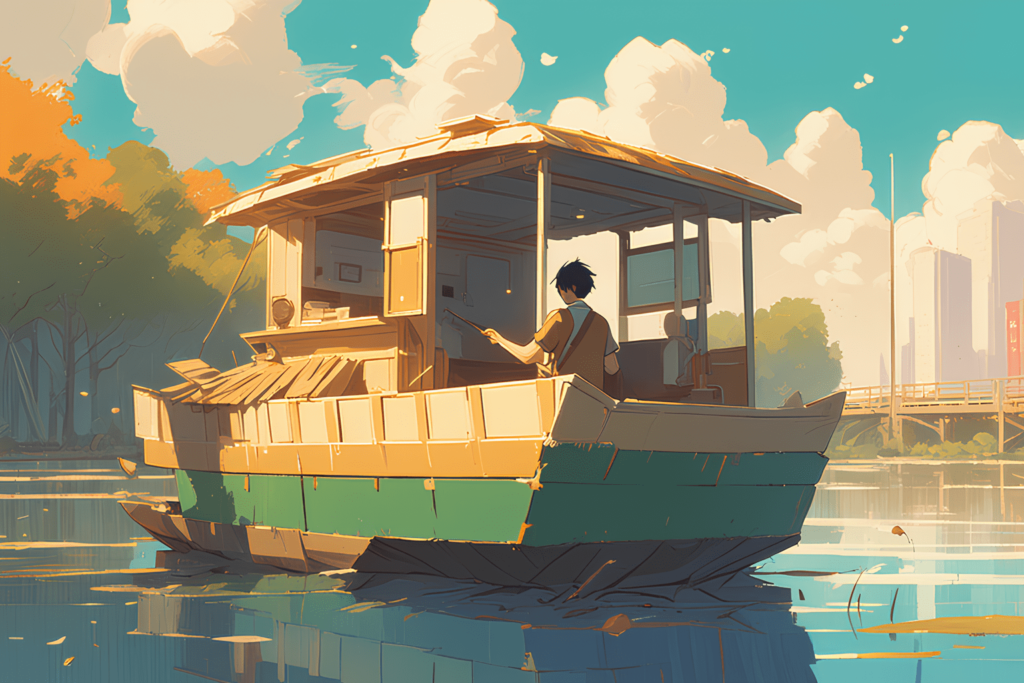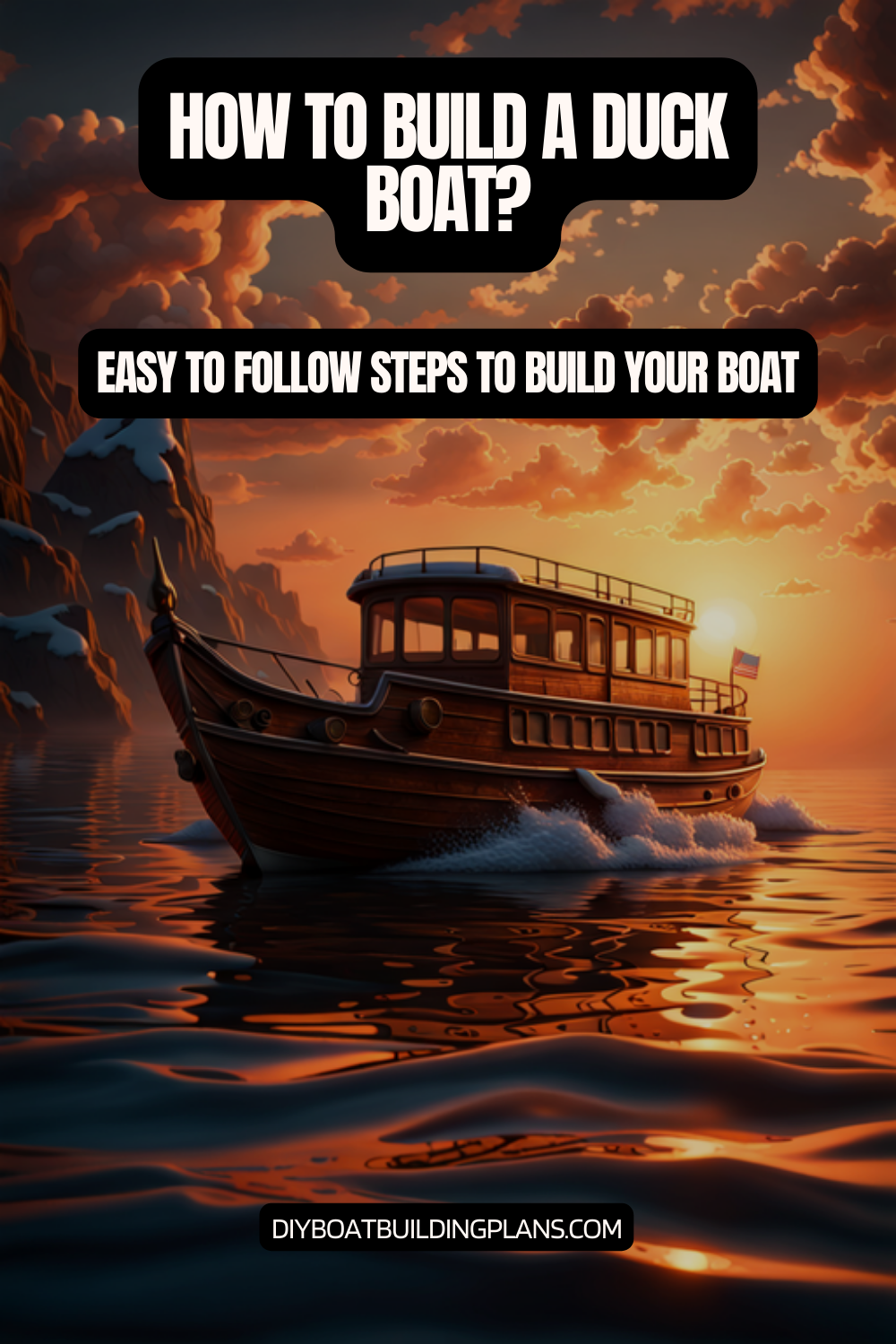Overview of How To Build a Duck Boat
Duck boats are a unique and versatile type of watercraft that have gained popularity among outdoor enthusiasts, particularly those who enjoy hunting, fishing, and recreational activities on lakes, rivers, and marshes. These boats are designed to navigate shallow waters and provide a stable platform for various water-based activities. In this article, we will explore the world of duck boats, delve into their history and evolution, and discuss the advantages of building your own duck boat.
Duck boats have a rich history, with their origins tracing back to the early 20th century. These vessels were initially developed to aid in waterfowl hunting, as their low profile and shallow draft allowed hunters to navigate through dense vegetation and access remote areas without disturbing the wildlife. Over time, the design of duck boats has evolved, incorporating advancements in materials, construction techniques, and features to enhance their functionality and versatility.
Building your own duck boat offers numerous advantages. Firstly, it allows you to customize the boat to your specific needs and preferences, ensuring that it perfectly suits your intended use, whether it’s for hunting, fishing, or recreational activities. Additionally, constructing your own duck boat can be a rewarding and satisfying project, allowing you to develop valuable woodworking and boat-building skills. Moreover, building your own boat can be a more cost-effective option compared to purchasing a pre-made model, making it an attractive choice for those on a budget.
Key Takeaways
- Duck boats are specialized watercraft designed for hunting waterfowl.
- Choosing the right design and materials is crucial for building a functional and durable duck boat.
- Constructing the hull involves shaping and joining the bottom and sides of the boat.
- Assembling the frame and deck involves creating a sturdy structure for the boat.
- Waterproofing and finishing touches are important for protecting the boat from water damage and adding aesthetic appeal.

Choosing the Right Design and Materials
When it comes to building a duck boat, selecting the right design and materials is crucial. Several factors must be considered to ensure that your homemade duck boat is both functional and durable.
One of the primary factors to consider is the size and capacity requirements of your duck boat. The dimensions of the boat will depend on the number of people you plan to accommodate, the amount of gear you need to transport, and the specific activities you intend to engage in. For instance, a smaller duck boat may be more suitable for solo fishing trips, while a larger model might be better suited for group hunting excursions. Additionally, the skill level and experience of the builder should be taken into account, as more complex designs may require a higher level of expertise.
Selecting the appropriate materials is another essential aspect of building a duck boat. The most common materials used in duck boat construction include various types of wood, plywood, and specialized marine-grade materials. Each material has its own unique properties, strengths, and weaknesses, and the choice will depend on factors such as durability, weight, and cost. Builders must carefully evaluate the available options and choose materials that will provide the desired balance of strength, lightweight, and affordability.
Availability and accessibility of materials are also important considerations. Depending on your location, certain materials may be more readily available or cost-effective than others. Researching local suppliers and exploring alternative sources can help you find the best materials for your duck boat project.
Constructing the Hull
The foundation of any duck boat is the hull, and constructing it requires careful planning and attention to detail. The first step in the process is to prepare the building area and set up the mold, which will serve as a guide for shaping the hull panels.
Once the building area is ready, the next step is to cut and shape the hull panels. This may involve using power tools, such as a circular saw or jigsaw, to precisely cut the panels to the desired dimensions. Careful measurements and attention to the design specifications are crucial at this stage to ensure the panels fit together seamlessly.
The assembly of the hull is a critical step in the duck boat-building process. The panels must be joined using the appropriate adhesives and fasteners to create a sturdy and watertight structure. Proper techniques, such as clamping the panels together and applying the adhesive evenly, are essential to ensure a strong and durable hull.
Once the hull is assembled, the next step is to sand and prepare the surface for finishing. This may involve using various grit sandpapers to smooth the hull and remove any imperfections or irregularities. This step is crucial in achieving a professional-looking finish and ensuring the hull is ready for the next stages of the build.
Assembling the Frame and Deck
The internal frame of the duck boat plays a crucial role in providing structural integrity and support. Designing and constructing the frame requires careful consideration of the materials and their placement within the boat.
When selecting the materials for the frame, builders must consider factors such as strength, weight, and compatibility with the hull and deck. Common materials used in duck boat frame construction include various types of wood, such as oak, cedar, or marine-grade plywood. The frame components must be positioned and secured in a way that ensures the overall stability and rigidity of the boat.
The next step in the process is to attach the deck to the frame. This involves cutting and fitting the deck panels to the frame, ensuring a seamless and secure connection. The deck must be firmly secured to the frame using appropriate fasteners and adhesives to maintain the structural integrity of the boat.
Throughout the assembly of the frame and deck, it is crucial to continuously assess the structural integrity of the components. Any weak points or areas of concern must be addressed to ensure the duck boat can withstand the stresses of use and provide a safe and reliable platform for the intended activities.
Waterproofing and Finishing Touches
| Step | Description | Time | Cost |
|---|---|---|---|
| 1 | Design the boat | 2 weeks | 0 |
| 2 | Choose materials | 1 week | 500 |
| 3 | Build the frame | 2 weeks | 1000 |
| 4 | Add the skin | 1 week | 500 |
| 5 | Install the motor | 1 day | 500 |
| 6 | Paint and finish | 1 week | 500 |
| 7 | Test the boat | 1 day | 0 |
Ensuring the duck boat is properly waterproofed is a critical step in the building process. This involves applying sealants and coatings to the hull and deck to create a barrier against water intrusion and protect the underlying materials.
When selecting the appropriate waterproofing materials, builders must consider factors such as durability, flexibility, and compatibility with the boat’s construction. Common waterproofing options include marine-grade epoxy resins, polyurethane coatings, and specialized sealants designed for use in aquatic environments.
The application of these waterproofing materials requires careful attention to detail and proper techniques. Builders must ensure that the surfaces are thoroughly cleaned and prepared before applying the sealants, and they must follow the manufacturer’s instructions to achieve the desired level of protection.
Once the waterproofing is complete, the next step is to finish the exterior of the duck boat. This may involve applying paint, varnish, or other decorative treatments to enhance the appearance and personalize the boat. The choice of finish will depend on personal preferences, as well as considerations such as durability, UV resistance, and ease of maintenance.
Outfitting the Duck Boat
Outfitting the duck boat with the necessary accessories and features is the final step in the building process. This includes installing seating and storage compartments, as well as incorporating various accessories such as oars, paddles, anchors, and other essential equipment.
The design and placement of the seating and storage compartments should be carefully considered to ensure optimal comfort, accessibility, and functionality. Builders may choose to incorporate features like adjustable or removable seats, as well as strategically placed storage areas for gear, supplies, and personal items.
In addition to the basic seating and storage components, builders may also consider incorporating additional features to enhance the duck boat’s capabilities. This could include installing motor mounts for the use of small outboard motors, or incorporating blind material and other hunting-specific accessories to make the boat more suitable for waterfowl hunting.
The selection and installation of these accessories and features require careful planning and attention to detail to ensure they are properly integrated into the boat’s design and do not compromise its structural integrity or performance.
Launching and Testing Your Duck Boat
The moment of truth has arrived – it’s time to launch your homemade duck boat and put it to the test. Preparing the boat for its maiden voyage is a crucial step that requires thorough inspection and attention to detail.
Before launching the boat, builders should carefully inspect the hull, frame, and deck to ensure that all components are securely in place and functioning as intended. This may involve checking for any signs of water leaks, ensuring the waterproofing is effective, and verifying the proper installation of all accessories and features.
Once the boat is ready, it’s time to launch it and observe its performance on the water. This is an exciting and rewarding moment, as the builder can finally see the fruits of their labor in action. During the initial test run, it’s important to pay close attention to the boat’s handling, stability, and overall performance, making any necessary adjustments or modifications to ensure it meets the desired specifications.
If the duck boat performs well during the initial test, the builder can proceed to more extensive trials, exploring its capabilities in different water conditions, loading scenarios, and various activities. This feedback can be used to fine-tune the boat and make any necessary improvements to enhance its functionality and enjoyment.
Maintenance and Storage Tips
Proper maintenance and storage are essential for ensuring the longevity and continued performance of your homemade duck boat. Regular cleaning and inspection after each use are crucial to identify and address any potential issues before they become more serious problems.
When cleaning the duck boat, builders should pay close attention to the hull, deck, and any exposed surfaces, removing any dirt, debris, or residue that may have accumulated during use. This not only maintains the boat’s appearance but also helps to prevent the buildup of harmful materials that could compromise the integrity of the materials over time.
Proper storage techniques are also essential for protecting the duck boat and extending its lifespan. This may involve storing the boat in a dry, well-ventilated area, such as a garage or shed, to prevent exposure to the elements and minimize the risk of damage. Builders should also consider covering the boat or using a boat lift to further protect it from the sun, rain, and other environmental factors.
In the event that any repairs or maintenance issues arise, it’s important for builders to address them promptly to ensure the continued safe and reliable operation of the duck boat. This may involve repairing or replacing damaged components, addressing any water leaks, or refinishing the exterior to maintain the boat’s appearance and protection.
Download over 500 Boat Plans. Click on the link below.
-->Click Here<--

Conclusion – – How To Build a Duck Boat
Building a duck boat from scratch is a rewarding and satisfying project that allows you to create a customized watercraft tailored to your specific needs and preferences. Throughout this article, we’ve explored the key steps involved in constructing a duck boat, from selecting the right design and materials to the final stages of outfitting and launching the vessel.
The process of building a duck boat is not only a practical endeavor but also an opportunity to develop valuable woodworking and boat-building skills. The sense of pride and accomplishment that comes from seeing your creation come to life and performing on the water is truly unparalleled.
As you embark on your duck boat-building journey, remember to approach the project with patience, attention to detail, and a willingness to learn. By following the guidelines and best practices outlined in this article, you can create a durable, functional, and visually appealing duck boat that will provide you with years of enjoyment, whether you’re hunting, fishing, or simply exploring the great outdoors.
So, what are you waiting for? Gather your materials, sharpen your tools, and get ready to embark on an exciting and rewarding adventure in the world of homemade duck boats. The satisfaction of launching your very own custom-built vessel and experiencing the thrill of its performance on the water will be a memory you’ll cherish for a lifetime.
FAQs – How To Build a Duck Boat
What is a duck boat?
A duck boat is a type of watercraft designed for hunting ducks and other waterfowl. It is typically a flat-bottomed boat that is low to the water and has a camouflage paint job to blend in with the surroundings.
What materials are needed to build a duck boat?
The materials needed to build a duck boat include marine-grade plywood, epoxy resin, fiberglass cloth, marine-grade paint, screws, and other hardware.
What tools are needed to build a duck boat?
The tools needed to build a duck boat include a circular saw, jigsaw, drill, screwdriver, sandpaper, paintbrushes, and other basic woodworking tools.
What are the steps to build a duck boat?
The steps to build a duck boat include designing the boat, cutting and assembling the plywood, coating the boat with epoxy resin, covering the boat with fiberglass cloth, sanding and painting the boat, and adding any necessary hardware.
How long does it take to build a duck boat?
The time it takes to build a duck boat depends on the size and complexity of the boat, as well as the skill level of the builder. It can take anywhere from a few weeks to several months to complete a duck boat.
What is the cost of building a duck boat?
The cost of building a duck boat varies depending on the materials used, the size of the boat, and other factors. It can range from a few hundred dollars to several thousand dollars.



